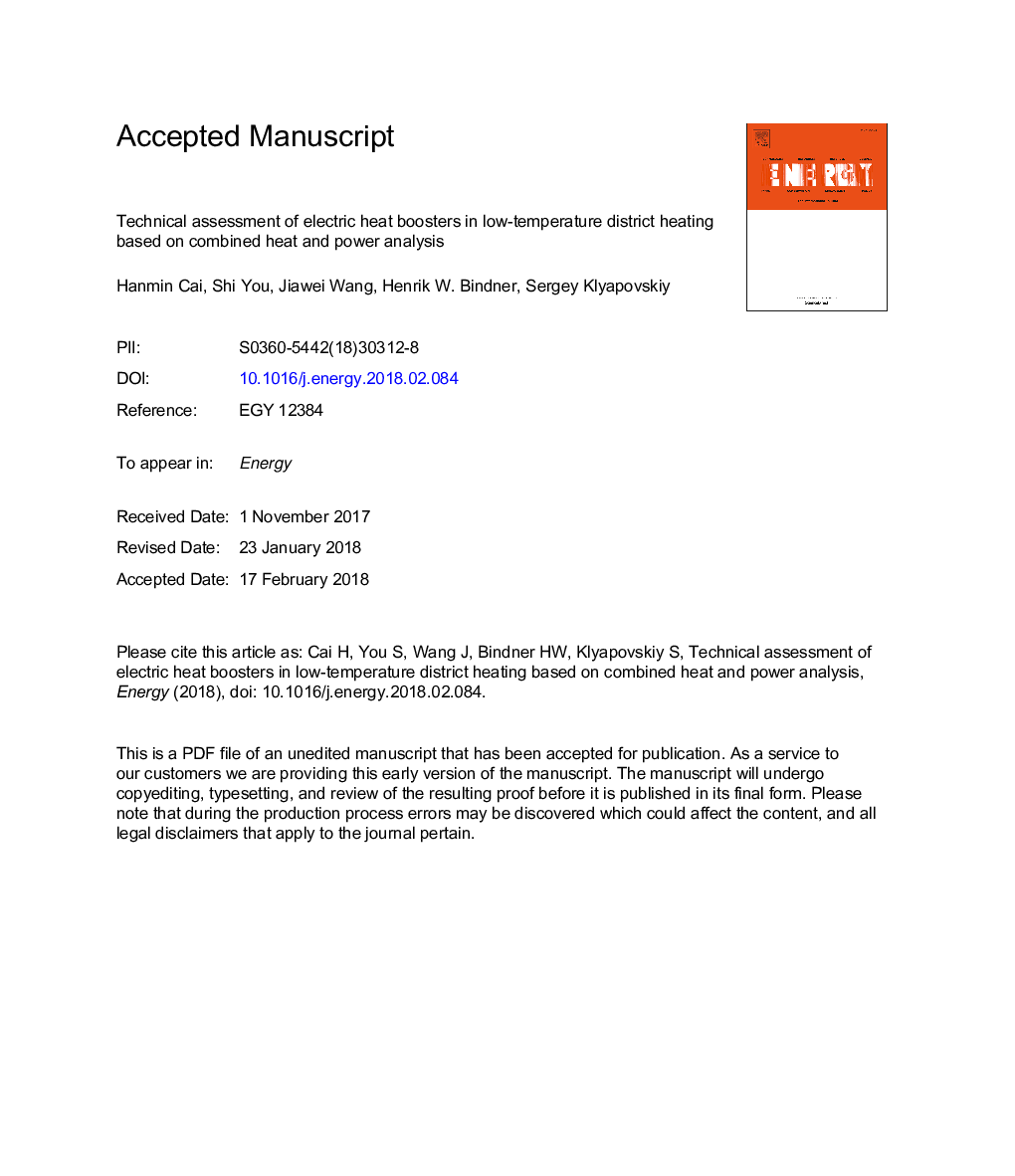| Article ID | Journal | Published Year | Pages | File Type |
|---|---|---|---|---|
| 8071933 | Energy | 2018 | 25 Pages |
Abstract
This paper provides a technical assessment of electric heat boosters (EHBs) in low-energy districts. The analysis is based on a hypothetical district with 23 terraced single-family houses supplied by both a low-temperature district heating (LTDH) network and a low-voltage network (LVN). Two case studies are provided to show the active role of EHBs in a smart energy system (SES). The first case compares annual heat and power flow analyses for LTDH at five supply temperature levels, focusing on their impacts. The results show that district heating network (DHN) losses can be reduced by 35% if the supply temperature is reduced from 70â¯Â°C to 50â¯Â°C, but the LVN peak power will have to be increased by up to 2% using heat boosting. The second case further aggregates EHBs to provide a fuel shift (FS) service for the DHN. The results show that while LVN peak power was increased by up to 4.3%, the basic power production and peak boiler usage for DHN could be reduced by as much as 15% and 48%, respectively. In summary, lower supply temperatures and intelligent components can improve system efficiency and turn the DHN into an integrated part of a SES.
Related Topics
Physical Sciences and Engineering
Energy
Energy (General)
Authors
Hanmin Cai, Shi You, Jiawei Wang, Henrik W. Bindner, Sergey Klyapovskiy,
